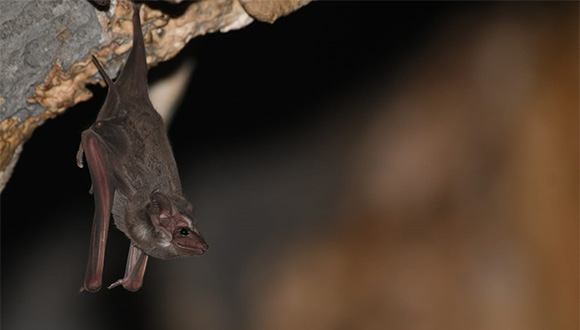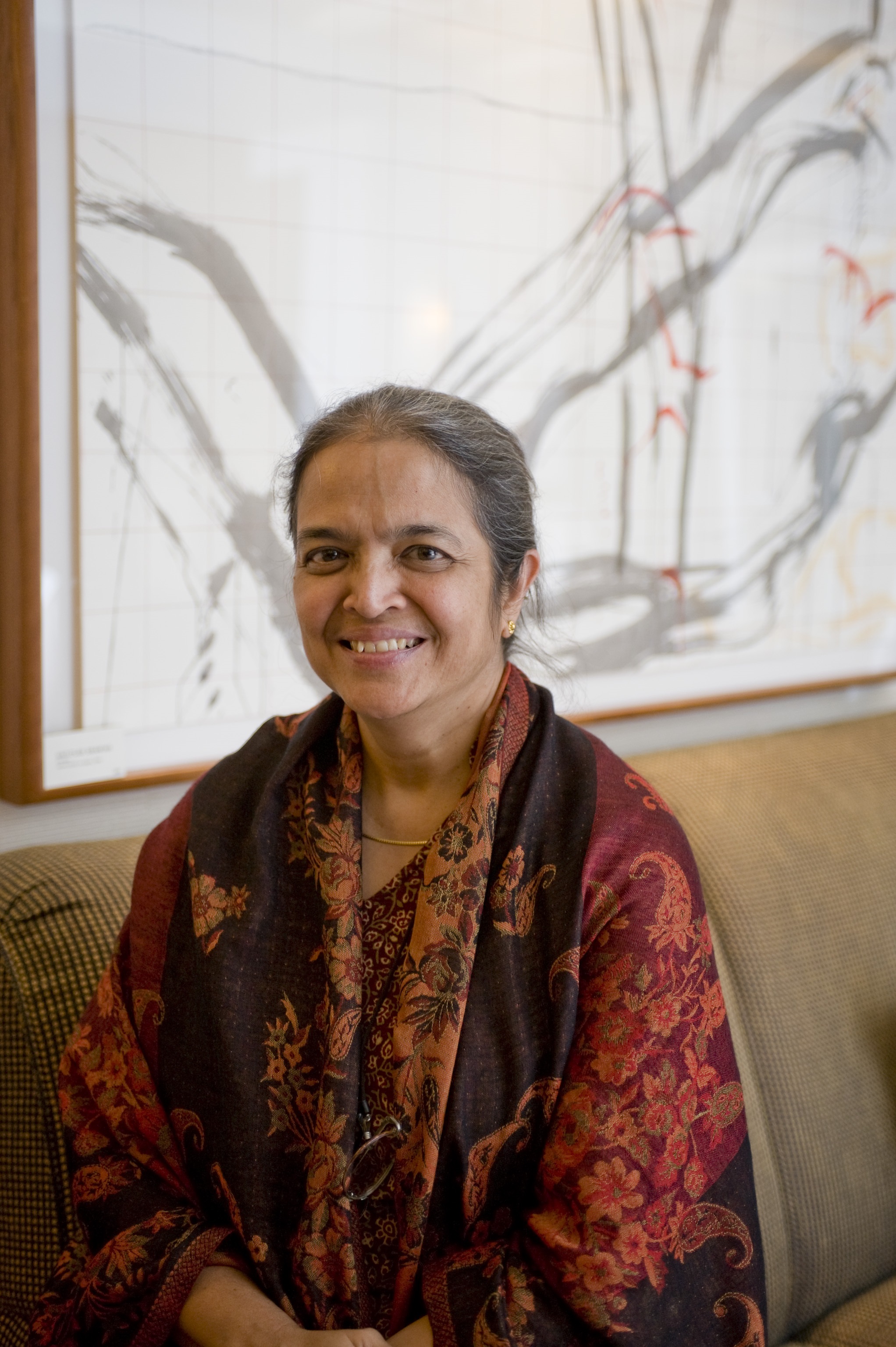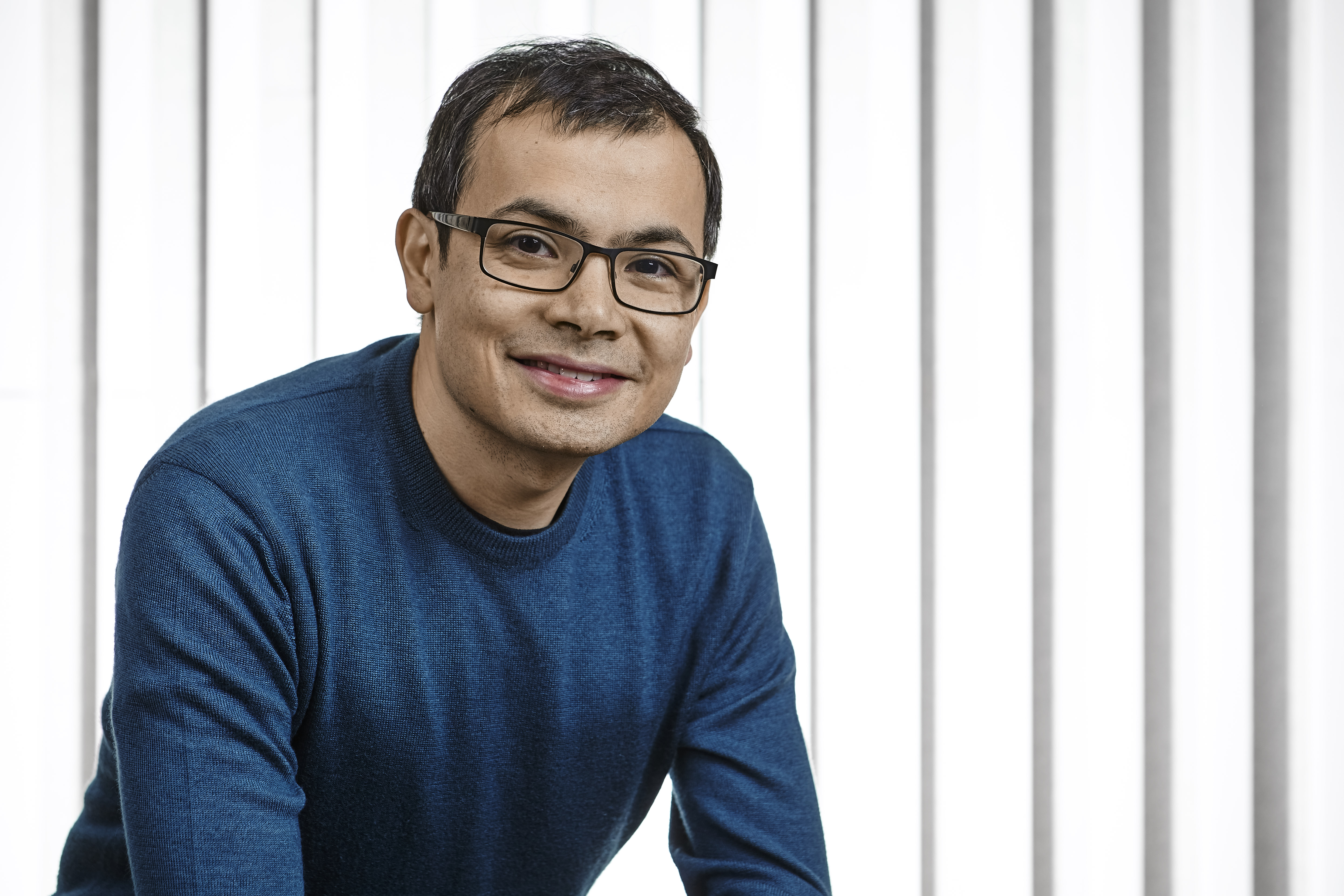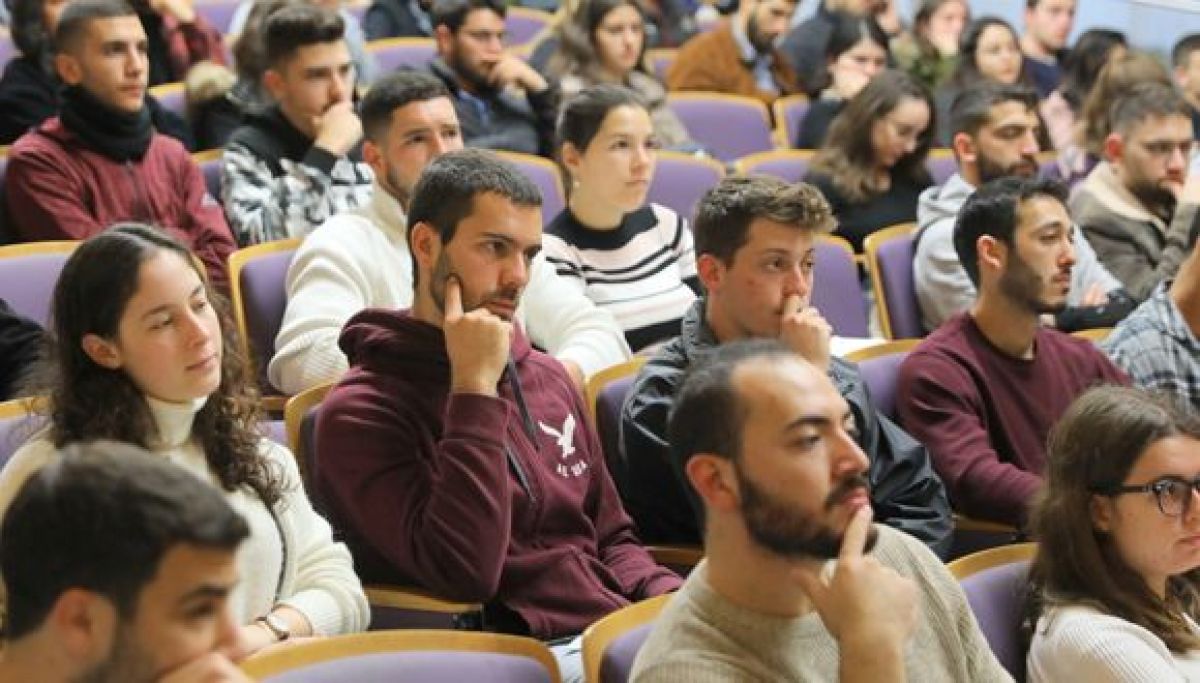Careful, it’s viral
Got questions about the deadly coronavirus? TAU researchers have the answers
Are global preparations for the coronavirus outbreak enough? Is the bad PR bats have been getting justified? And how do you build two brand new hospitals in a few days? Tel Aviv University researchers explain it all.
The usual suspects
Everyone’s looking for someone or something to blame for the outbreak and spread of the deadly coronavirus, and again, as in the Ebola and SARS eruptions years ago, the main suspects are the bats.
Dr. Maya Weinberg of the School of Zoology and a member of the research group of Professor Yossi Yovel, comes to the defense of the winged mammals: “It’s true that there’s a 96% match in the genomes of the coronavirus found in the first patients, to those found in bats. But that’s not enough. First, we like to work with higher match rates, at least 99%. Second, the corona is a multifaceted virus, and I wouldn’t be surprised if today, several weeks since the outbreak, patients are in hospitals with different genetic sequence.”
Could it be that the infection was caused by eating sick bats? “The answer is yes. A sick bat can be contagious. Is it advisable to eat sick animals, whether they are bats or rats or chickens? The answer is no. It’s not advisable to eat any animal before veterinary sanitation,” says Dr. Weinberg.
Although everyone is pointing an accusing finger at bats, they’re not considered an animal that can cause an outbreak. “To be considered an animal that’s spreading disease, two conditions have to be met: the first, that the animal will not die from the virus it carries, and the second – that the virus will replicate in the fluids and organs of the body. This will create viral DNA that can be spread further. Bats don’t meet these two conditions,” she explains. “The bats’ immune system adjusts and constantly “corrects” itself. For example, when they fly at night to look for food, their body temperature rises to 42 degrees (Celsius), which naturally clears their bodies and takes away pathogens. They have the ability to deal with foreign or decomposing DNA, and they also have antiviral proteins that our body expresses only during illness, but are found regularly in the blood of bats.”

One good bat on the tree is better than a sick bat on the plate. (Photo: Jonathan Ben Simon)
The government that built two hospitals within a week
To cope with the growing medical burden, the Chinese government has undertaken a task that seems impossible – setting up two hospitals in a matter of days to provide care to coronavirus patients. The Chinese accomplished the mission within ten very intense days (and nights), with over 10,000 workers working efficiently around the clock. Two new Wuhan hospitals opened, in the region the virus first broke out, and are expected to take in about 1,500 patients each.
Professor Asaf Goldschmidt, from the Department of East Asian Studies, is not surprised. In a recent article, he shows how, a thousand years ago, during the Song Dynasty in the 11th and 12th centuries, the Chinese government addressed the outbreak of plague.
“The Chinese state is organized into bureaucratic organizations, and some deal with public health, medical aid and food distribution. Long before the Westernized bureaucracy, it was already working in China, with the main goal being efficient tax collection. The Chinese already understood what every welfare state advocate says today – to collect taxes, the state has to give something back,” explains Prof. Goldschmidt.
“In China, the Emperor ruled, and some of his status was also derived from the willingness to help the people in times of distress. When events like natural disasters or epidemics happened, the Chinese saw it as a sign that the gods were asking the emperor to improve his behavior, including concern for his people. Even today, the legitimacy of the Communist Party comes partly from concern for the population, “he concludes.

Only in China. From a parking lot to a hospital in 10 days.
From the Far East to the Middle East
Even if you have no plans to visit China, the coronavirus is spreading rapidly and may reach Israel as well. Dr. Bruria Adini is the head of the Department of Emergency Management and Disaster Medicine from the School of Public Health, in which students learn about the various risks facing society in Israel and the world, discuss their implications and contribute through research activities.
“Coping with communicable diseases is a global challenge, and Israel, as part of the international community, is committed to working effectively to address that risk.” Dr. Adini explains. “Appropriate preparation includes formulating protocols and procedures, maintaining equipment inventory, medication and vaccines (if available), and training routinely so that essential steps such as epidemiological investigation, isolation, closure, and medical care can be taken quickly.
The health system in particular, and Israel’s emergency systems in general, have for several decades been dealing with a variety of dangers, including those resulting from the spread of pathogens such as viruses or bacteria (by natural outbreak or as a result of human acts, such as biological terror). When there’s an event that has the potential to impact society in Israel, such as the current coronavirus, defined by the World Health Organization as an emergency event, it’s of course the state’s duty to take precautions and reduce the severity of its impact on society in Israel. To date, most patients are in China, but the possibility of the disease spreading to Israel can’t be excluded.”
Global warming is bad for your health
“It’s important to know that with global warming, more and more new epidemics like the coronavirus and SARS are expected to occur,” Dr. Adini notes. “This is because things like deforestation, expansion of urbanization or agriculture, bring humans closer to nature (animals and plants), which makes them more susceptible to those naturally occurring viruses. For centuries, viruses have survived and evolved in wild animals to not harm the host body, but when they pass from animals to humans, they can quickly cause great damage. The weather can also affect the spread of the virus. For example, the degree of humidity in the air can allow the virus to survive for a longer time (for example, when the person sneezes) compared to drier air, thus actually helping climate conditions to transmit the virus.”

Expanding urbanization processes leads nature into our backyard, which can be dangerous
Is what has been done so far in countries like China to prevent the spread of the virus satisfactory? “One major problem is that in a significant number of countries in the world there’s not a sufficiently well-developed system that can monitor the entire affected population, including early identification of the exposed and infected population. As a result, the total number of carriers and / or patients may be unknown, so all countries have to prepare for a scenario where the scope of the disease is much larger than currently known.
Dealing with an infectious disease, which people contract even before they have obvious symptoms, is a significant challenge, even for large countries. Since the disease doesn’t have a vaccine or drug treatment, it’s important to take steps to contain the event, such as quarantine the affected, isolate patients and restrict movement, to prevent the spread of the virus and minimize its damage. Proper steps are now being taken, but it is unclear whether, at the beginning of the epidemic in China, these actions were taken as quickly as necessary.
Israel is taking precautionary measures, including distributing protective clothing to medical teams and other first responders, creating a policy for isolating patients and people who are suspected of being exposed to the disease. Israel also has a very good ability to provide palliative care to patients.”
Do you think the information currently being distributed about the coronavirus is trustworthy? “It should be based only on reports and guidelines from officials, and take the informal reports with a grain of salt. Fear is a natural state of affairs in these situations, and knowledge reduces anxiety. However, in a state of fear and great uncertainty, social networks are spreading a lot of rumors and “fake news”, which distorts reality and causes tension and anxiety beyond what’s necessary. It’s important to be careful and follow the Ministry of Health’s guidelines for maintaining hygiene and care.”



 Lonnie G. Bunch III was the founding director of the Smithsonian’s inspiring National Museum of African American History and Culture in Washington, D.C., which constitutes the most comprehensive and significant project toward the preservation of the full sweep of African American history and its impact on American and world history. With over 40,000 exhibits, the museum has been critically praised for its clear-sighted, unflinching portrayal of the African American experience. An influential curator and prolific author, Bunch serves today as the Smithsonian’s 14th Secretary – the first historian and first African-American to be appointed to this position.
Lonnie G. Bunch III was the founding director of the Smithsonian’s inspiring National Museum of African American History and Culture in Washington, D.C., which constitutes the most comprehensive and significant project toward the preservation of the full sweep of African American history and its impact on American and world history. With over 40,000 exhibits, the museum has been critically praised for its clear-sighted, unflinching portrayal of the African American experience. An influential curator and prolific author, Bunch serves today as the Smithsonian’s 14th Secretary – the first historian and first African-American to be appointed to this position.
 Prof. Barbara Kirshenblatt-Gimblett is a distinguished scholar of Performance studies and Jewish Studies at New York University, who led the development of the core exhibition of POLIN Museum of the History of Polish Jews, winner of the 2016 European Museum of the Year Award. The museum is a hub for Jewish historical preservation in Warsaw, tracing the 1000-year history of Polish Jews, in an effort to re-animate a vibrant and culturally rich vanished Jewish world, which she has spent a lifetime exploring – telling the story literally where it took place.
Prof. Barbara Kirshenblatt-Gimblett is a distinguished scholar of Performance studies and Jewish Studies at New York University, who led the development of the core exhibition of POLIN Museum of the History of Polish Jews, winner of the 2016 European Museum of the Year Award. The museum is a hub for Jewish historical preservation in Warsaw, tracing the 1000-year history of Polish Jews, in an effort to re-animate a vibrant and culturally rich vanished Jewish world, which she has spent a lifetime exploring – telling the story literally where it took place.
 Prof. Debora Diniz is the Deputy Director of the Rights and Justice Unit for the International Planned Parenthood Federation/Western Hemisphere Region, where she oversees strategies to promote and protect gender equality, sex, and reproductive rights and health, and to eliminate violence against women and girls in Latin America and the Caribbean region. Her ongoing contributions span her work in sexual and reproductive health rights, social protection, and reframing the Zika virus in relation to social and racial inequalities.
Prof. Debora Diniz is the Deputy Director of the Rights and Justice Unit for the International Planned Parenthood Federation/Western Hemisphere Region, where she oversees strategies to promote and protect gender equality, sex, and reproductive rights and health, and to eliminate violence against women and girls in Latin America and the Caribbean region. Her ongoing contributions span her work in sexual and reproductive health rights, social protection, and reframing the Zika virus in relation to social and racial inequalities.
 Prof. Gita Sen is a pioneering feminist scholar, researcher, and advocate. For decades, she has worked expansively in the fields of population policies, reproductive and sexual health, women’s rights, poverty, labor markets and global governance, combining her academic career with policy advocacy and activism. Her innovative research on disadvantaged populations in low income rural settings, together with her mentorship of young scholars and advocates, has made a significant impact on the field.
Prof. Gita Sen is a pioneering feminist scholar, researcher, and advocate. For decades, she has worked expansively in the fields of population policies, reproductive and sexual health, women’s rights, poverty, labor markets and global governance, combining her academic career with policy advocacy and activism. Her innovative research on disadvantaged populations in low income rural settings, together with her mentorship of young scholars and advocates, has made a significant impact on the field.
 Dr. Demis Hassabis is a pioneer of artificial intelligence and a widely-cited neuroscientist. He is the co-founder and CEO of DeepMind, one of the world’s leading AI research companies, which seeks to combine insights from neuroscience and machine learning with the latest developments in computer hardware, to construct a mechanism for general-purpose learning – ‘artificial general intelligence.’ To date, DeepMind has published nearly 1,000 papers – including multiple Nature and Science publications – and achieved groundbreaking results in challenging AI domains, from self-learning algorithms playing strategy games at a “superhuman” level (DQN and AlphaGo), to protein folding and medical applications.
Dr. Demis Hassabis is a pioneer of artificial intelligence and a widely-cited neuroscientist. He is the co-founder and CEO of DeepMind, one of the world’s leading AI research companies, which seeks to combine insights from neuroscience and machine learning with the latest developments in computer hardware, to construct a mechanism for general-purpose learning – ‘artificial general intelligence.’ To date, DeepMind has published nearly 1,000 papers – including multiple Nature and Science publications – and achieved groundbreaking results in challenging AI domains, from self-learning algorithms playing strategy games at a “superhuman” level (DQN and AlphaGo), to protein folding and medical applications.
 Prof. Amnon Shashua is a machine learning and computer vision researcher at The Hebrew University of Jerusalem. His work and insights formed the seeds of several startups he has co-founded over the years, including Mobileye (acquired by Intel Corp. in 2017), which develops AI to enable driving assistance systems and autonomous driving technology – to date, more than 55 million cars throughout the world are equipped with Mobileye systems; and OrCam, which harnesses computer vision and natural language processing to assist the visually and hearing impaired.
Prof. Amnon Shashua is a machine learning and computer vision researcher at The Hebrew University of Jerusalem. His work and insights formed the seeds of several startups he has co-founded over the years, including Mobileye (acquired by Intel Corp. in 2017), which develops AI to enable driving assistance systems and autonomous driving technology – to date, more than 55 million cars throughout the world are equipped with Mobileye systems; and OrCam, which harnesses computer vision and natural language processing to assist the visually and hearing impaired.




 Was he serious about it at the time? “Absolutely not,” says Prof. Rechavi. “I didn’t think it through, and didn’t think people would be interested. It was just a tweet, I didn’t think about it for more than a few seconds.”
Nonetheless, within hours, Prof. Rechavi got responses from scientists all over the world.
Was he serious about it at the time? “Absolutely not,” says Prof. Rechavi. “I didn’t think it through, and didn’t think people would be interested. It was just a tweet, I didn’t think about it for more than a few seconds.”
Nonetheless, within hours, Prof. Rechavi got responses from scientists all over the world.
 (Colleen Murphy, molecular biologist from Princeton, and Piali Sengupta, a neurogeneticist from Brandeis)
(Colleen Murphy, molecular biologist from Princeton, and Piali Sengupta, a neurogeneticist from Brandeis)
 (Ahna Skop, geneticist from UW-Madison)
(Ahna Skop, geneticist from UW-Madison)
 (Javier Irazoqui, microbiologist from the University of Massachusetts)
Within days, Prof. Rechavi received hundreds of messages from people who wanted to participate. And so, two days after the original tweet, the idea became a reality:
(Javier Irazoqui, microbiologist from the University of Massachusetts)
Within days, Prof. Rechavi received hundreds of messages from people who wanted to participate. And so, two days after the original tweet, the idea became a reality:
 “One of the great things about Twitter,” Prof. Rechavi says, “is that it feels like a big, global community of scientists who want to learn from each other and support each other. I want the conference to feel that way too. I want it to be friendly and welcoming, I want people to feel supported by the crowd. That kind of environment is great for collaboration.”
The “Woodstock of Science”
Woodstock.bio is different from other conferences. The event will have 75 speakers, with very short talks, and presentations containing only one slide. The order of speakers within each session will be decided randomly, to keep things fresh and spontaneous.
Each speaker will choose their own “Walk Up Song”, a short musical intro, like when a baseball hitter is walking up to the pitch. As soon as one person is done talking, a random generator will decide on the next song, from among the speakers listed for that session, so the order will be a surprise even to the speakers themselves. Prof. Rechavi hopes this will make the event feel more like a festival, and takes being compared to Woodstock as a compliment.
“One of the great things about Twitter,” Prof. Rechavi says, “is that it feels like a big, global community of scientists who want to learn from each other and support each other. I want the conference to feel that way too. I want it to be friendly and welcoming, I want people to feel supported by the crowd. That kind of environment is great for collaboration.”
The “Woodstock of Science”
Woodstock.bio is different from other conferences. The event will have 75 speakers, with very short talks, and presentations containing only one slide. The order of speakers within each session will be decided randomly, to keep things fresh and spontaneous.
Each speaker will choose their own “Walk Up Song”, a short musical intro, like when a baseball hitter is walking up to the pitch. As soon as one person is done talking, a random generator will decide on the next song, from among the speakers listed for that session, so the order will be a surprise even to the speakers themselves. Prof. Rechavi hopes this will make the event feel more like a festival, and takes being compared to Woodstock as a compliment.




.jpg) Prof. Ronit Satchi-Fainaro
Prof. Ronit Satchi-Fainaro.jpg) Prof. Carmit Levy
Prof. Carmit Levy